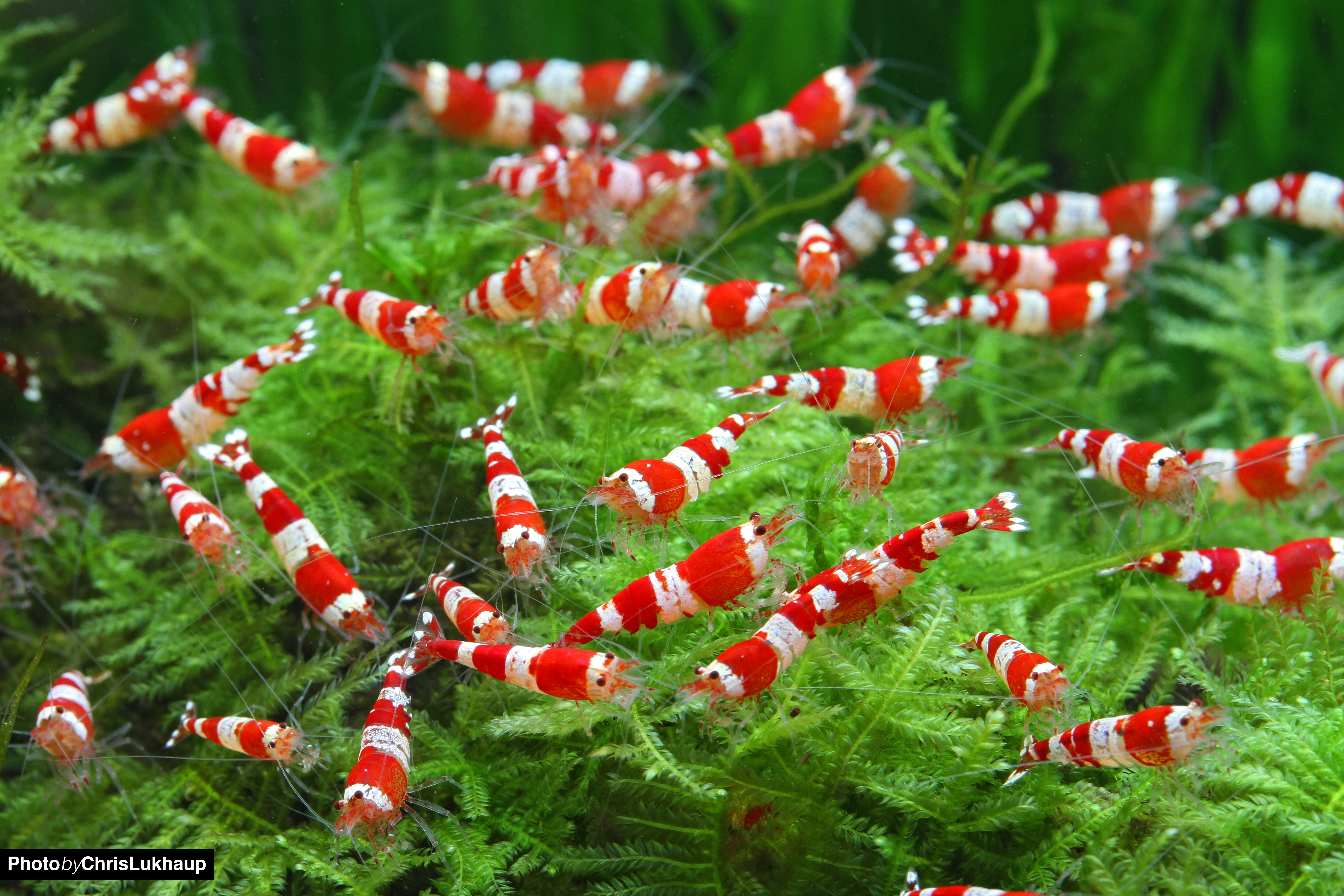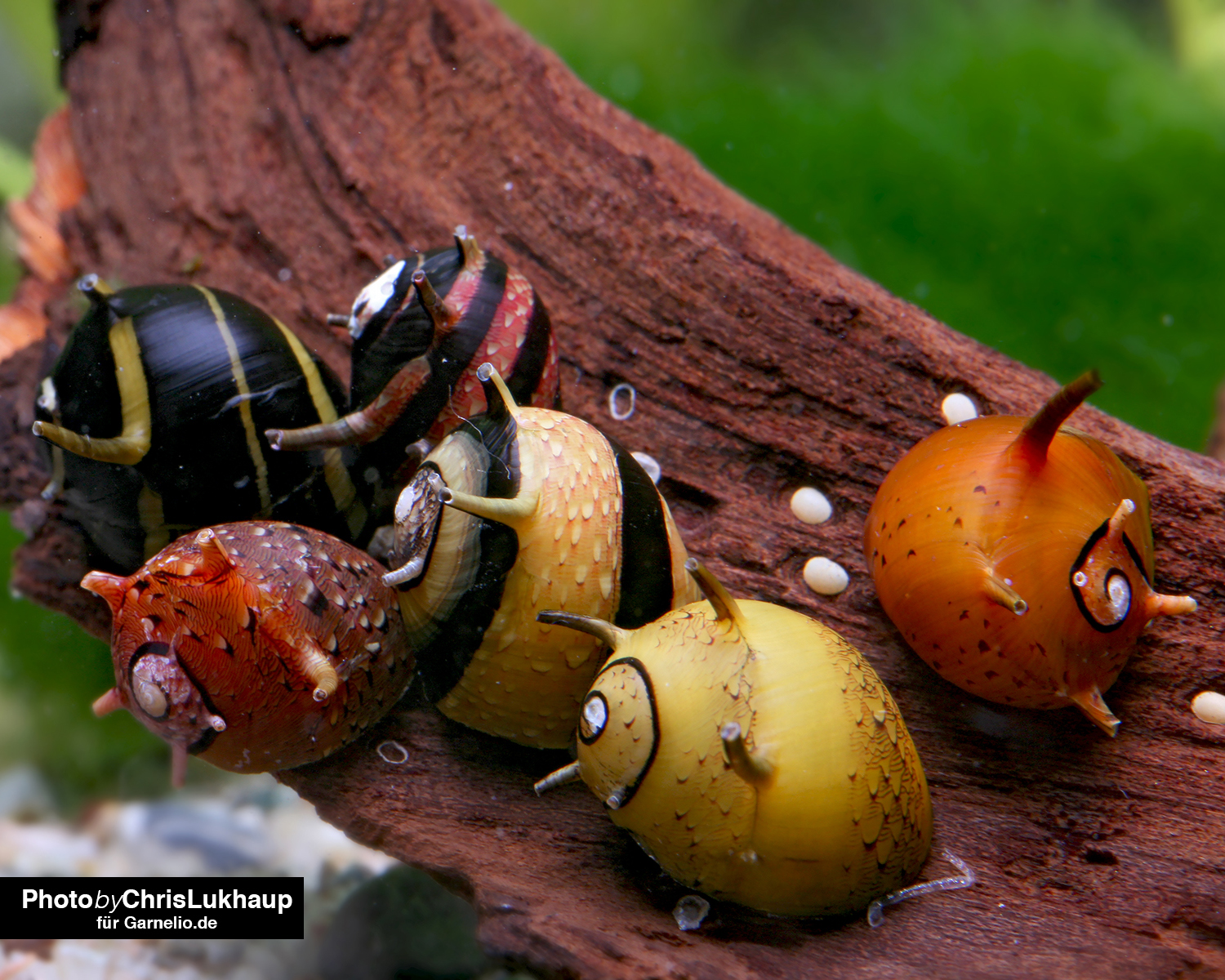The osmotic shock in shrimps
Scrolling through forums and social media, one often reads about sudden shrimp deaths with new arrivals or other emerging diseases shortly after introduction and at some point also stumbles upon the so-called osmotic shock, which we have already covered in our article on Sudden Shrimp Death.
Who can succumb to osmotic shock?
In principle: all aquarium inhabitants. Even though we prefer to focus on shrimp, fish and other aquatic life can also suffer from osmotic shock, so for them, too, it is important to acclimate carefully and adapt to the water values. Excesses are excreted through the urine and kidneys, which almost settles the question of whether fish can pee and why water hygiene in the aquarium is so important.
Aquarists with several aquariums, who mainly keep different shrimps that prefer either soft or hard water, have had shrimps jump (or climb) from one aquarium to another, which actually "can't" with the water values prevailing there, and still stayed alive. In some way these animals were able to regulate their osmotic pressure extremely fast. This occurred mainly in aquariums that were not covered or only incompletely covered. Nevertheless, this phenomenon should not be a permission slip to rapidly transfer aquarium inhabitants to other water parameters contrary to their requirements. The slow change from hard to soft water and vice versa is still possible under consideration of some parameters, although life expectancy and breeding may be reduced.

Osmotic regulation in crayfish and shrimp
But what happens during osmoregulation? In simple terms, it is the regulated ability to regulate a balance between the increase and decrease of salts by water. This regulates the osmotic pressure in a body to avoid too much or too little salt and water. Aquatic organisms, whose bodies have a higher content of salts than their habitat, therefore basically adapt to the prevailing parameters, taking into account their own salt balance, and are therefore permanently busy regulating. If they did not master and implement this ability, the pressure on their cells could cause them to burst.
So-called osmoregulators are animals, including shrimps and crayfish, which can be found in fresh water as well as in brackish or even salt water. Depending on their environment, these have to constantly adapt so that the osmotic pressure in their body does not become too high. In shrimp, the green antennal gland functions similar to a kidney and is therefore responsible for the release of hormones, urine, but also other metabolic end products that would otherwise have a toxic effect. Osmolarity, i.e. the salinity to be maintained, is generally higher in freshwater crustaceans, hence they are also called hyperosmotic regulators. In contrast, Artemia, for example, are hypoosmotic regulators because they basically have lower salinity. Shrimp, on the other hand, can be both, as they come from waters with varying salt concentrations, among other things, and are therefore able to control salt increase or decrease via the chloride cells in their gills.

Preventing osmotic shock
But what exactly happens during osmotic shock? If an aquatic animal is suddenly introduced to a new environment, for example from hard water to soft water, the prevailing salinity in the water may be lower than the animal was previously accustomed to. As a result, the osmotic pressure in the body cells increases and more water permeates the body, which the animal cannot "change over" ad hoc. This can not only lead to mucosal defects, but also destroy blood cells and even result in cartilage and tissue damage. These are not always immediately obvious and can manifest themselves weeks later. All this is associated with increased stress, which in turn can favor an infestation with parasites, but also bacterial infections, since the immune system of the animals has literally "taken a hit". This is why careful introduction and acclimation of new animals is so essential.
Acclimating animals with the droplet method
For shrimps, especially for high breeders, which are a bit more demanding and sensitive, dripping has proven to be the best method of acclimation, as even tiny differences could result in massive stress for the animals. But it is also recommended for others and can therefore be used for fish, crayfish and some snails.
After the arrival of the animals, they are accustomed to room temperature. To do this, it is best to simply leave the transport box, but open the transport bags so that fresh oxygen can get into the water. In winter this can take even a little longer, sometimes the animals have fallen into a cold rigidity and look almost deceased, because they do not move. In this case patience is needed, because if you would put this bag on the heater or on the aquarium water, it could be that the animals are additionally damaged by the sudden temperature difference. Then carefully empty the transport bag into a previously well rinsed bucket, preferably with a lid, as it is possible that the shrimp will jump. With crayfish you should not underestimate their ability to climb and their strength to push away even loosely placed lids, if necessary weigh down the lid with a heavy book.

Snail balcony
Good care should also be taken to ensure that no animals are caught in the bag. With an acclimation set, as we also carry in our store, the aquarium water can now be adjusted prima. One side of the hose is fixed to the aquarium so that it points into the water, the other is placed in the bucket. Then the hose is sucked so that the water begins to flow. The flow rate can be controlled with the regulating valve, so that the new inhabitants are adjusted to the aquarium water drop by drop. Depending on the source or transport water, the process should be done long enough and slowly enough until at least the amount of transport water in the bucket has doubled. This may well correspond to one drop per 1 or 2 seconds. Patience and prudence are also required here. The animals are then carefully captured with a landing net and placed in the aquarium. The dripping water in the bucket is discarded, but never poured into the aquarium. If aquatic creatures are acclimated in this way, the resulting stress can be well minimized, so that they adapt more easily and consequential damage can also be reduced. This method is also well suited for aquarium snails that do not have an operculum, i.e. a lid on the foot, including, for example, post horn snails. Other species, however, which can cover themselves tightly, should rather be acclimated with a snail balcony, as we carry it in our store, so that they do not succumb to shock. Dripping would be rather useless for them, as they would not even notice the acclimation process and would then be surprised by the different salt content. It is also recommended to perform a water change in the aquarium of 30-50% two days before the arrival of the new tank inhabitants, in order to reduce the germ density somewhat.
With a little patience, the newcomers can get used to the aquarium and effectively prevent long-term damage. Even though the new handling may sound cumbersome at first glance, it is highly effective in maintaining the health and well-being of the new inhabitants.

Scientific sources for "Osmotic Shock"
Hi there and thank you for this detailed article.
How well is osmotic shock established as a deadly or detrimental and more than temporary reaction to differences in salinity levels?
It's hard to find any scientific literature on this topic, what sources is this article based on?
It would be great if those sources would be linked in the article.
Many thanks.
Osmotic Shock in (small) fish
This is a very good article and write-up about osmoregulatory stress and shock during acclimatization.
It should be noted that fish are especially prone to suffer this when introduced in very soft aquarium setups, especially small fish. Many people use the "Drop and Plop" method no matter their water parameters.
Would be great if there was more emphasis that this is relevant for fish too, not only for shrimp!